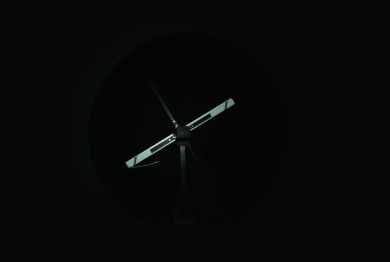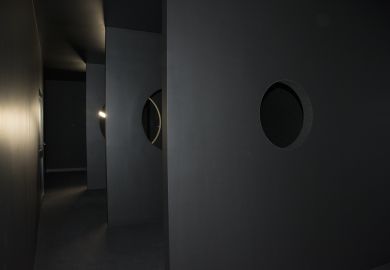What is a photogoniometer for in Lighting?

Last week we explained what a photometry was and its importance in Lighting. This week we are talking about the device that generates photometry, the photogoniometer. Come on over and discover what this fundamental tool is for in the field of lighting.
A photogoniometer is an equipment used to carry out photometric tests of luminaires. It consists of a photo detector mounted at a certain distance from the lamp. This is applied to a turntable that moves horizontally and vertically. During the photometric test, the luminaire rotates in both axes, which allows the measurement of the light flux emitted in all directions.
By measuring the photometric curves of the luminaires, it is possible to test the efficiency and characteristics of their light distribution. This makes it possible to optimize lighting projects, through the selection of the most suitable models and quantities.
The Tromilux photometric laboratory allows the measurement of the luminous intensity distribution of light sources. This equipment also accurately determines various photometric parameters such as UGR, luminaire flux, efficiency, polar diagram, aperture angle, maximum distance to height ratio, etc.
With its own high-precision photogoniometer instrument for light intensity distribution measurements, Tromilux intensively tests the photometric performance of luminaires in order to meet international lighting standards.
With files such as .ies, .ldt, etc., created from photometric tests, lighting projects can be carried out with software such as WinElux, Dialux or Relux.
Tromilux makes these files related to its products available for the development of lighting projects, upon request. We also have specialized professionals available to develop your lighting project.
Contact us!
A photogoniometer is an equipment used to carry out photometric tests of luminaires. It consists of a photo detector mounted at a certain distance from the lamp. This is applied to a turntable that moves horizontally and vertically. During the photometric test, the luminaire rotates in both axes, which allows the measurement of the light flux emitted in all directions.
By measuring the photometric curves of the luminaires, it is possible to test the efficiency and characteristics of their light distribution. This makes it possible to optimize lighting projects, through the selection of the most suitable models and quantities.
The Tromilux photometric laboratory allows the measurement of the luminous intensity distribution of light sources. This equipment also accurately determines various photometric parameters such as UGR, luminaire flux, efficiency, polar diagram, aperture angle, maximum distance to height ratio, etc.
With its own high-precision photogoniometer instrument for light intensity distribution measurements, Tromilux intensively tests the photometric performance of luminaires in order to meet international lighting standards.
With files such as .ies, .ldt, etc., created from photometric tests, lighting projects can be carried out with software such as WinElux, Dialux or Relux.
Tromilux makes these files related to its products available for the development of lighting projects, upon request. We also have specialized professionals available to develop your lighting project.
Contact us!
